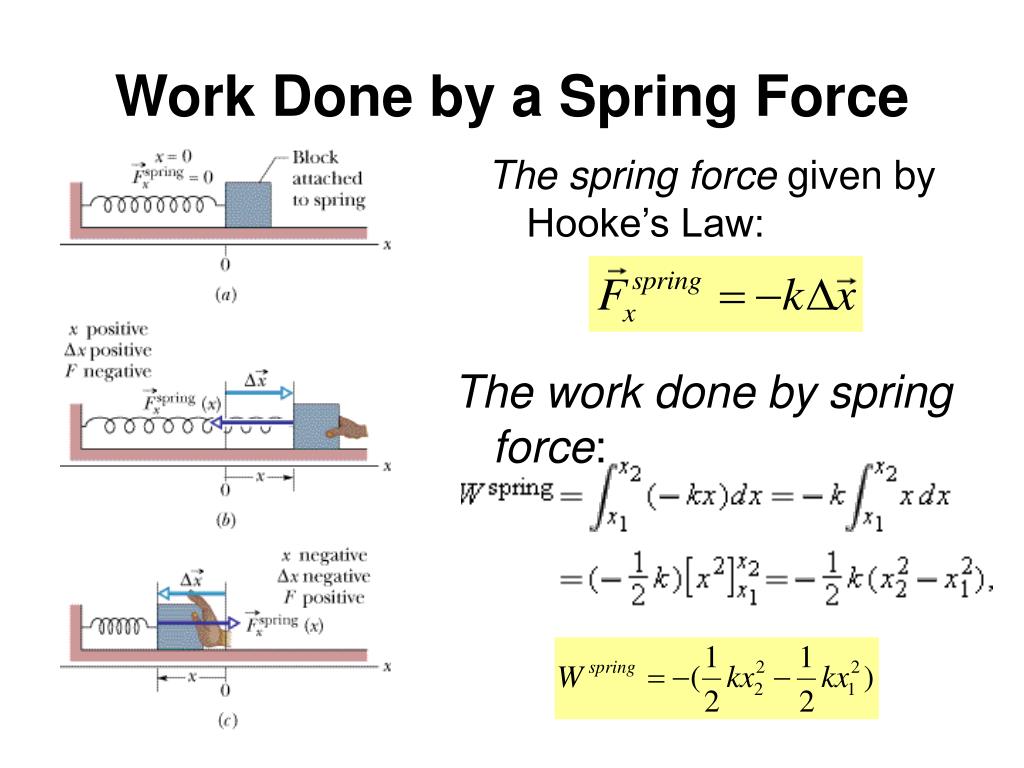

We use Hooke’s Law for calculating the potential energy of a spring. Calculating the potential energy of a spring The work done depends on the spring constant k and the distance stretched. For example, the elastic potential energy of a spring is equal to the work done for stretching the spring. It is possible because of its stored elastic potential energy.Īs a result of deformation, the potential energy stored in an elastic object is Elastic Potential Energy. Whenever a spring is compressed or stretched, it returns to its standard shape when the stress is relieved.

It is because the spring stores potential energy. Springs regain their regular shape despite putting force on them by compressing or stretching them. Hooke’s Law is negative because it is a restoring force, but the positive version is a valid representation. It depends on factors such as the thickness of the spring’s coiled wire and the material of the spring. The spring constant is different for different springs. Mathematically, Hooke’s Law equation can be written as F = -kxį = Force required to change the spring’s shape Here, displacement is how far the spring is stretched or compressed from its original shape. Hooke’s Law states that the force required for changing the spring’s shape is proportional to the displacement in the spring. By plotting the equation on the graph, we get a linear correlation between the force (y-axis) and the spring’s displacement (x-axis) by plotting the equation.

Therefore, to know the exact magnitude of energy required to stretch or compress for displacement in the spring, we should use the work done by the spring formula. Springs with large spring constants are stiff and are difficult to compress.Īccording to Newton’s Third Law of Motion, when force is applied to the spring, it exerts back an equal magnitude force but in the opposite direction. Every spring has its stiffness, known by the spring constant (k). A spring exerts a force against the force we apply while extending the spring to attain an equilibrium position.


 0 kommentar(er)
0 kommentar(er)
